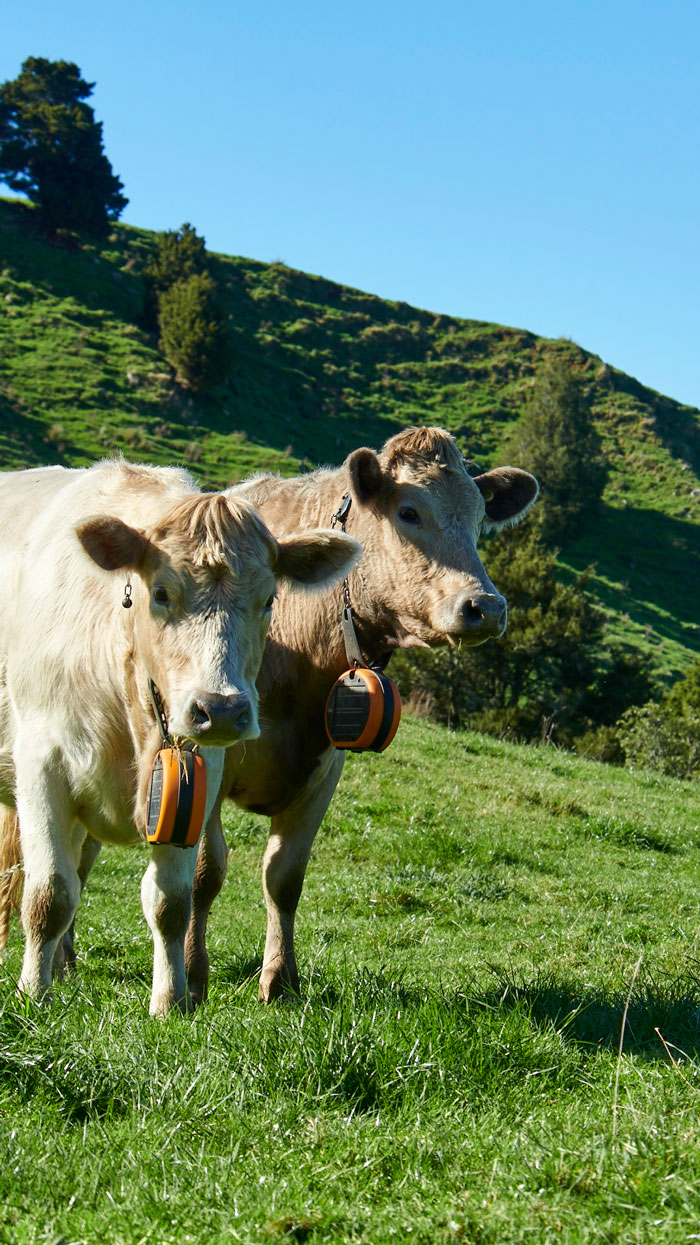La nueva normativa sobre agua dulce aviva el interés de los ganaderos de vacuno por eShepherd™.
Monday, 12 June, 2023

El coste de excluir permanentemente a los animales de los cursos de agua y las zonas protegidas está avivando el interés de los ganaderos de vacuno de carne por los cercados virtuales, ya que buscan soluciones innovadoras para cumplir la normativa medioambiental. La información se obtuvo a partir de la investigación llevada a cabo por Gallagher como parte de su proceso de desarrollo de productos dirigido por los ganaderos para introducir en el mercado su solución de vallado virtual fabricada en Nueva Zelanda, eShepherd™.
La nueva normativa gubernamental sobre agua dulce obliga a vallar todos los lagos, humedales y cursos de agua de más de un metro de anchura antes del 1 de julio de 2025. Y no es poca cosa. "Las nuevas normas suponen un reto único para los ganaderos de vacuno de Nueva Zelanda, que a menudo gestionan vastas y remotas extensiones de tierra entrelazadas por múltiples cursos de agua difíciles de vallar", afirma Sarah Adams, Directora General de Estrategia Global y Nuevas Empresas de Gallagher.
"A algunos de ellos les puede costar millones de dólares el vallado tradicional. Con el aumento de los costes del vallado, la escasez de personal cualificado y los largos plazos de entrega de los materiales de vallado, buscan desesperadamente soluciones alternativas que les ahorren tiempo y dinero a largo plazo. Se trata de un reto importante que el vallado virtual puede ayudar a afrontar a los agricultores".
Las nuevas normas de exclusión de vías navegables serán gestionadas por los 11 consejos regionales de Nueva Zelanda. Gallagher ha presentado eShepherd a varias de las autoridades regionales para que lo consideren una solución viable. "Trabajaremos con algunas de estas autoridades en pruebas de concepto en los próximos meses", dice Sarah.
Además de ser una solución viable para la exclusión de cursos de agua, eShepherd puede ayudar a los ganaderos a implantar un régimen de pastoreo que favorezca la salud de sus tierras y pastos. "eShepherd ofrece a los ganaderos la posibilidad de aplicar pautas de pastoreo flexibles y adaptables, que pueden mejorar la productividad de su suelo, sus pastos y sus animales", afirma Sarah. "También significa que pueden alejar el ganado de las zonas de carga de nutrientes y mantenerlo en zonas de pastos menos apetecibles para limpiar y mejorar la fertilidad del suelo".
Eliminar las barreras físicas a las rutas migratorias de los animales también puede ayudar a que florezca la biodiversidad de una zona, una gran ventaja de eShepherd frente a las vallas físicas. "Una valla física puede contener al ganado, pero limita los movimientos migratorios de la fauna salvaje", dice Sarah. "eShepherd permite al ganado pastar en una zona contenida sin levantar una barrera que interfiera con los animales salvajes que necesitan pasar".
Con el cambio climático y las catástrofes naturales cada vez más frecuentes, eShepherd también podría ayudar a evitar la pérdida de ganado y las lesiones en caso de catástrofe. "La infraestructura física de cercado impide que el ganado se ponga a salvo, conlleva un alto coste de recuperación y requiere la presencia humana en escenarios peligrosos para su gestión", afirma Sarah. "Con eShepherd, los ganaderos pueden localizar y alejar rápidamente al ganado de peligros ambientales como inundaciones, incendios forestales y otras catástrofes naturales".
También permite a los ganaderos restablecer rápidamente la contención del ganado. Las cercas virtuales pueden reactivarse y el ganado controlarse de inmediato, lo que elimina la necesidad de volver a instalar cercas físicas, que resultan costosas y requieren mucha mano de obra. Esto le permite centrarse en la recuperación tras el suceso medioambiental.
Los ganaderos interesados en obtener más información o en enviar una consulta pueden registrarse aquí.